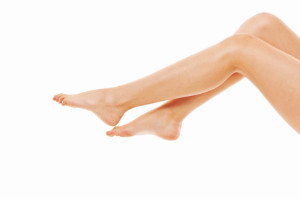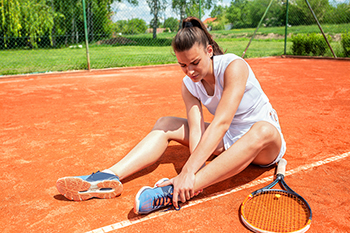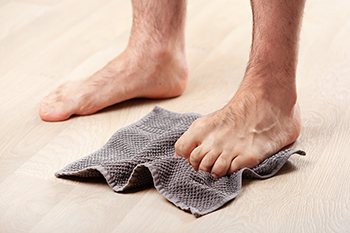Connect With Us
Blog
Items filtered by date: October 2022
Plantar Warts Can Be Treated!
How Do the Toenails Work?

Although they may seem small and insignificant to some, the toenails are absolutely critical to the functioning of the foot. The toenails essentially act as a kind of protective plate to guard against injuries. This can help prevent the toes from getting injured during daily activities. The toenails can also act as claws of some sort, improving the extent to which the toes can grip and dig into the floor during motion. The nail is made up of several different parts: the nail root, the nail bed, the nail plate, the eponychium, the paronychium, and lastly the hyponychium. These six components of the nail are each important in their own unique ways. Importantly, the disruption of one component of the nail can fundamentally disrupt the overall toenail. For more information about toenails, consult with a podiatrist today.
If you have any concerns about your feet, contact Thi Pham, DPM from Foot Specialists of Tri-County. Our doctor can provide the care you need to keep you pain-free and on your feet.
Biomechanics in Podiatry
Podiatric biomechanics is a particular sector of specialty podiatry with licensed practitioners who are trained to diagnose and treat conditions affecting the foot, ankle and lower leg. Biomechanics deals with the forces that act against the body, causing an interference with the biological structures. It focuses on the movement of the ankle, the foot and the forces that interact with them.
A History of Biomechanics
- Biomechanics dates back to the BC era in Egypt where evidence of professional foot care has been recorded.
- In 1974, biomechanics gained a higher profile from the studies of Merton Root, who claimed that by changing or controlling the forces between the ankle and the foot, corrections or conditions could be implemented to gain strength and coordination in the area.
Modern technological improvements are based on past theories and therapeutic processes that provide a better understanding of podiatric concepts for biomechanics. Computers can provide accurate information about the forces and patterns of the feet and lower legs.
Understanding biomechanics of the feet can help improve and eliminate pain, stopping further stress to the foot.
If you have any questions please feel free to contact our offices located in Sulphur Springs, Winnsboro, and Pittsburg, TX . We offer the newest diagnostic and treatment technologies for all your foot and ankle needs.
Babies Can Get Ingrown Toenails

An ingrown toenail generally causes pain and discomfort, and it can be unsettling to a parent if their child develops this foot condition. It occurs as a result of a toenail that grows into the skin, instead of over it. Babies' toenails are soft and curved, and can easily grow into the side of the skin, and if this happens, it will typically become red and swollen. An infected ingrown toenail can produce pus or yellow fluid, and it may cause pain while walking or crawling. Soaking your child’s foot in warm water may bring mild relief, and it may help to gently massage the nail and surrounding area. The chances of getting an ingrown toenail may be reduced when effective prevention methods are practiced. These can include trimming the nails straight across, and avoiding cutting them too short. Additionally, gently pulling the skin away from the nail may be done after a bath, when the nails are soft. If you would like more information about how to protect your child from getting an ingrown toenail, please confer with a podiatrist.
Ingrown toenails can become painful if they are not treated properly. For more information about ingrown toenails, contact Thi Pham, DPM of Foot Specialists of Tri-County. Our doctor can provide the care you need to keep you pain-free and on your feet.
Ingrown Toenails
Ingrown toenails occur when a toenail grows sideways into the bed of the nail, causing pain, swelling, and possibly infection.
Causes
- Bacterial infections
- Improper nail cutting such as cutting it too short or not straight across
- Trauma to the toe, such as stubbing, which causes the nail to grow back irregularly
- Ill-fitting shoes that bunch the toes too close together
- Genetic predisposition
Prevention
Because ingrown toenails are not something found outside of shoe-wearing cultures, going barefoot as often as possible will decrease the likeliness of developing ingrown toenails. Wearing proper fitting shoes and using proper cutting techniques will also help decrease your risk of developing ingrown toenails.
Treatment
Ingrown toenails are a very treatable foot condition. In minor cases, soaking the affected area in salt or antibacterial soaps will not only help with the ingrown nail itself, but also help prevent any infections from occurring. In more severe cases, surgery is an option. In either case, speaking to your podiatrist about this condition will help you get a better understanding of specific treatment options that are right for you.
If you have any questions please feel free to contact our offices located in Sulphur Springs, Winnsboro, and Pittsburg, TX . We offer the newest diagnostic and treatment technologies for all your foot and ankle needs.
Foot Injuries for Tennis Players

Sometimes, playing a particular sport can put an individual at a greater risk of developing certain foot conditions, and tennis is certainly no exception. Playing tennis can cause foot injuries because it is particularly demanding on the feet—a tennis player must be constantly stopping and starting movement. Additionally, specific kinds of tennis courts can have very hard surfaces. If you play tennis, you could potentially develop heel pain when excessively training. A common condition is known as plantar fasciitis, the inflammation of the plantar fascia in the arch of the foot. You could also develop what is known as sesamoiditis. This condition occurs when the sesamoid bones in the ball of the feet beneath the big toe joint become inflamed. Other tennis-related injuries include Achilles tendonitis, stress fractures, and ankle sprains. If you play tennis, contact a podiatrist for treatment and more information.
Sports related foot and ankle injuries require proper treatment before players can go back to their regular routines. For more information, contact Thi Pham, DPM of Foot Specialists of Tri-County. Our doctor can provide the care you need to keep you pain-free and on your feet.
Sports Related Foot and Ankle Injuries
Foot and ankle injuries are a common occurrence when it comes to athletes of any sport. While many athletes dismiss the initial aches and pains, the truth is that ignoring potential foot and ankle injuries can lead to serious problems. As athletes continue to place pressure and strain the area further, a mild injury can turn into something as serious as a rupture and may lead to a permanent disability. There are many factors that contribute to sports related foot and ankle injuries, which include failure to warm up properly, not providing support or wearing bad footwear. Common injuries and conditions athletes face, including:
- Plantar Fasciitis
- Plantar Fasciosis
- Achilles Tendinitis
- Achilles Tendon Rupture
- Ankle Sprains
Sports related injuries are commonly treated using the RICE method. This includes rest, applying ice to the injured area, compression and elevating the ankle. More serious sprains and injuries may require surgery, which could include arthroscopic and reconstructive surgery. Rehabilitation and therapy may also be required in order to get any recovering athlete to become fully functional again. Any unusual aches and pains an athlete sustains must be evaluated by a licensed, reputable medical professional.
If you have any questions please feel free to contact our offices located in Sulphur Springs, Winnsboro, and Pittsburg, TX . We offer the newest diagnostic and treatment technologies for all your foot and ankle needs.
Stretching for Standing All Day

Sometimes due to one’s profession or lifestyle, an individual may be expected to stand for prolonged periods of time without otherwise moving or engaging in physical activities. This static position has its own risks of potential health problems, including lower back pain, foot pain, and achy knees. One way to address the problem of standing in a static position for long periods of time is to stretch because stretching can reduce tension in the muscles. For example, to reduce tension caused from standing, you may choose to perform the standing lunge calf stretch. This can be done by standing in front of a wall, putting one’s hands against the wall, and then repeatedly moving one foot behind the other in a lunge position. You ought to feel a stretch in the calf. This should be repeated on both feet. If you want to learn more about how stretching can address problems caused by standing all day, contact a podiatrist.
Stretching the feet is a great way to prevent injuries. If you have any concerns with your feet consult with Thi Pham, DPM from Foot Specialists of Tri-County. Our doctor will assess your condition and provide you with quality foot and ankle treatment.
Stretching the Feet
Being the backbone of the body, the feet carry your entire weight and can easily become overexerted, causing cramps and pain. As with any body part, stretching your feet can serve many benefits. From increasing flexibility to even providing some pain relief, be sure to give your feet a stretch from time to time. This is especially important for athletes or anyone performing aerobic exercises, but anyone experiencing foot pain or is on their feet constantly should also engage in this practice.
Great ways to stretch your feet:
- Crossing one leg over the others and carefully pull your toes back. Do 10-20 repetitions and repeat the process for each foot
- Face a wall with your arms out and hands flat against the wall. Step back with one foot and keep it flat on the floor while moving the other leg forward. Lean towards the wall until you feel a stretch. Hold for 30 seconds and perform 10 repetitions for each foot
- Be sure not to overextend or push your limbs too hard or you could risk pulling or straining your muscle
Individuals who tend to their feet by regular stretching every day should be able to minimize foot pain and prevent new problems from arising.
If you have any questions, please feel free to contact our offices located in Sulphur Springs, Winnsboro, and Pittsburg, TX . We offer the newest diagnostic and treatment technologies for all your foot care needs.


